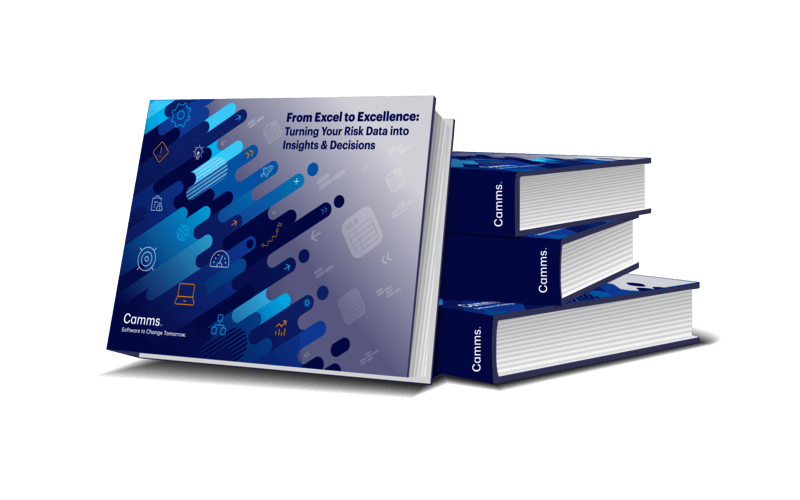- Why spreadsheets are becoming redundant for risk management.
- 10 reasons to switch from spreadsheets to software.
- How to choose the right GRC software for your organisation.

Many teams are still using spreadsheets to manage risk. And while it can be a good place to start for some smaller businesses, as organisations expand, it becomes unmanageable. Complex processes like risk management require multiple users, complex data mapping, control monitoring, automation, strict data governance, and in-depth reporting & analytics – and spreadsheets simply don’t offer this level of functionality. When risk data is contained in a spreadsheet, it’s just data; but when risk data is used in a GRC tool it becomes insights and decisions.
In this eBook, we explore why spreadsheets are outdated for risk management and help you to identify if your business is ready to swap spreadsheets for an automated GRC solution. We detail the top 10 reasons to switch from spreadsheets to software and share valuable guidance on how to choose the right GRC tool for your organisation.
Many teams are still using spreadsheets to manage risk. And while it can be a good place to start for some smaller businesses, as organisations expand, it becomes unmanageable. Complex processes like risk management require multiple users, complex data mapping, control monitoring, automation, strict data governance, and in-depth reporting & analytics – and spreadsheets simply don’t offer this level of functionality. When risk data is contained in a spreadsheet, it’s just data; but when risk data is used in a GRC tool it becomes insights and decisions.
In this eBook, we explore why spreadsheets are outdated for risk management and help you to identify if your business is ready to swap spreadsheets for an automated GRC solution. We detail the top 10 reasons to switch from spreadsheets to software and share valuable guidance on how to choose the right GRC tool for your organisation.
